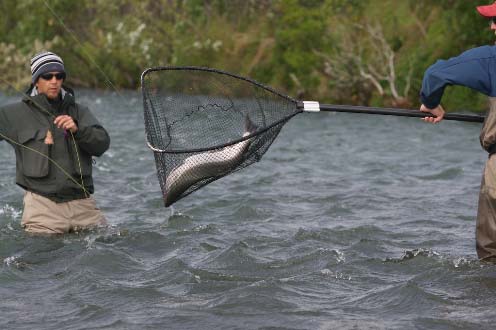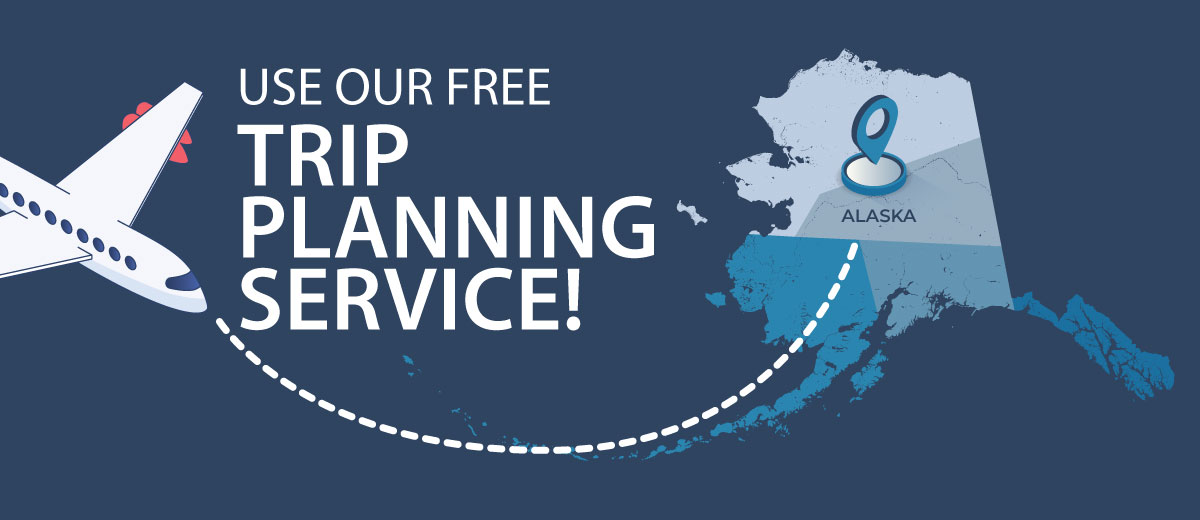
Clearly an essential piece of equipment for Alaska anglers (I’ve wet-waded twice, on purpose, in fifteen years of fishing in our great, but chilly, state), waders are also one of a handful of items on your list of angling accoutrement that need to be repaired and/or replaced frequently. A fly rod might last generations, and indeed many are treated as heirlooms and passed on from father to son or daughter as a matter of course. Modern reels, with the proper care and storage, likewise seem to last forever, especially if you shop in the higher-end aisles, where companies like Ross Reels and Lamson provide quality reels with exceptional durability.
But waders? Waders wear and begin to leak; waders tear and begin to leak; waders get punctured and begin to leak. I’ve even had more than one set of waders with pinhole leaks right out of the box. And whether July or October, leaky waders suck.
The good news is that today’s waders are better than ever, and in the comfort department, drastically so. It’s hard to beat the old neoprene outfits as far as durability and basic keep-you-dry functionality go, but there was little worse than peeling a pair of those off after a day’s casting. In fact, unless fishing in absolutely freezing waters and air temperatures, I wouldn’t even consider a set of neoprenes today.
Today’s waders also fit better, and thus it’s wise to do your shopping (or at least trying-on) at an outdoors store or tackle shop, so you can be assured to get a set that’s going to conform to your fit. Keep in mind the season of the year when you do most of your fishing, however, as you will likely want to think about keeping room for layers underneath. And considering the comfort factor, with the quality of contemporary undergarments, including fleece, I actually don’t own neoprene waders at all, even though I typically fish late into the year, choosing instead to utilize a layering system to stay warm.
As far as styles of waders go, chest waders are by some distance the most popular choice for serious anglers, and in particular fly anglers, who tend to do a lot of wading. For those who don’t wade much and who’d rather not be encumbered by full chest waders, there are two other options: waist-high waders or hip waders. I confess to not having a lot of experience with the latter, other than promptly wading over the top of them on the two or three occasions I’ve donned a set, but I do think waist-high waders are a great option for folks who fish from a boat a lot. With waist-highs, you can still step into the river full of confidence, whether jumping out to drop the anchor on the beach or to kneel by your trophy in the shallows for a quick pic, but at the same time, they’re as comfortable and unobtrusive as wearing a pair of sweatpants for the day.
When it comes to materials, there is the aforementioned neoprene, a material that surely remains the most popular purchase, as casual anglers empty box stores full of these cheaper-yet-functional waders. If you’re fishing in very cold temperatures and/or don’t mind sweating, they’re certainly worth a look. Then there are rubber waders, which are stiffer and even less comfortable. They lack breathability as well, so all your sweat remains locked in. However, rubber waders are easy to patch if needed; they are extremely tough and they don’t cost nearly as much. Only, if you wade-fish much, I wouldn’t recommend shopping in this category. If either of the above choices sounds about right, check out the offerings from Caddis, Pro Line and Frogg Toggs, three companies that offer both material options, hip-, waist and chest models, and even many styles from the third category: breathable waders.
Breathable waders, often made from high-tech materials like GORE-Tex, are as a rule lightweight and comfortable, and one of the greatest benefits aside from the increased mobility is that these waders will wick sweat away from your body, keeping you doubly dry. Of course, quality breathable waders are more expensive, but if you fish quite a bit, it’s worth it. For a reasonably-priced but very functional set of breathable chest waders, I suggest you look into the Rocky River Waders from Chota or the breathable options from the three companies mentioned above. If money is no object, there are a plethora of other options, from big names in the industry and elsewhere.
The bottom line, no matter your choice: check for fit, choose your style based on how much and where you wade-fish, pick a material based on both budget and need, and stay high and dry on the water next season.
Want to learn more? Go here to see a video of the Caddis Northern Guide Breathable Waders in action, or click here to read another review.


